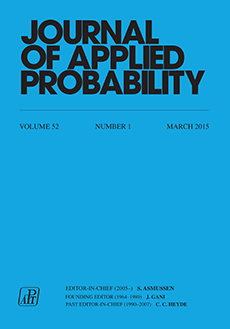Abstract
Hanski's incidence function model is one of the most widely used metapopulation models in ecology. It models the presence/absence of a species at spatially distinct habitat patches as a discrete-time Markov chain whose transition probabilities are determined by the physical landscape. In this analysis, the limiting behaviour of the model is studied as the number of patches increases and the size of the patches decreases. Two different limiting cases are identified depending on whether or not the metapopulation is initially near extinction. Basic properties of the limiting models are derived.
Citation
R. McVinish. P. K. Pollett. "The limiting behaviour of Hanski's incidence function metapopulation model." J. Appl. Probab. 51 (2) 297 - 316, June 2014. https://doi.org/10.1239/jap/1402578626
Information





